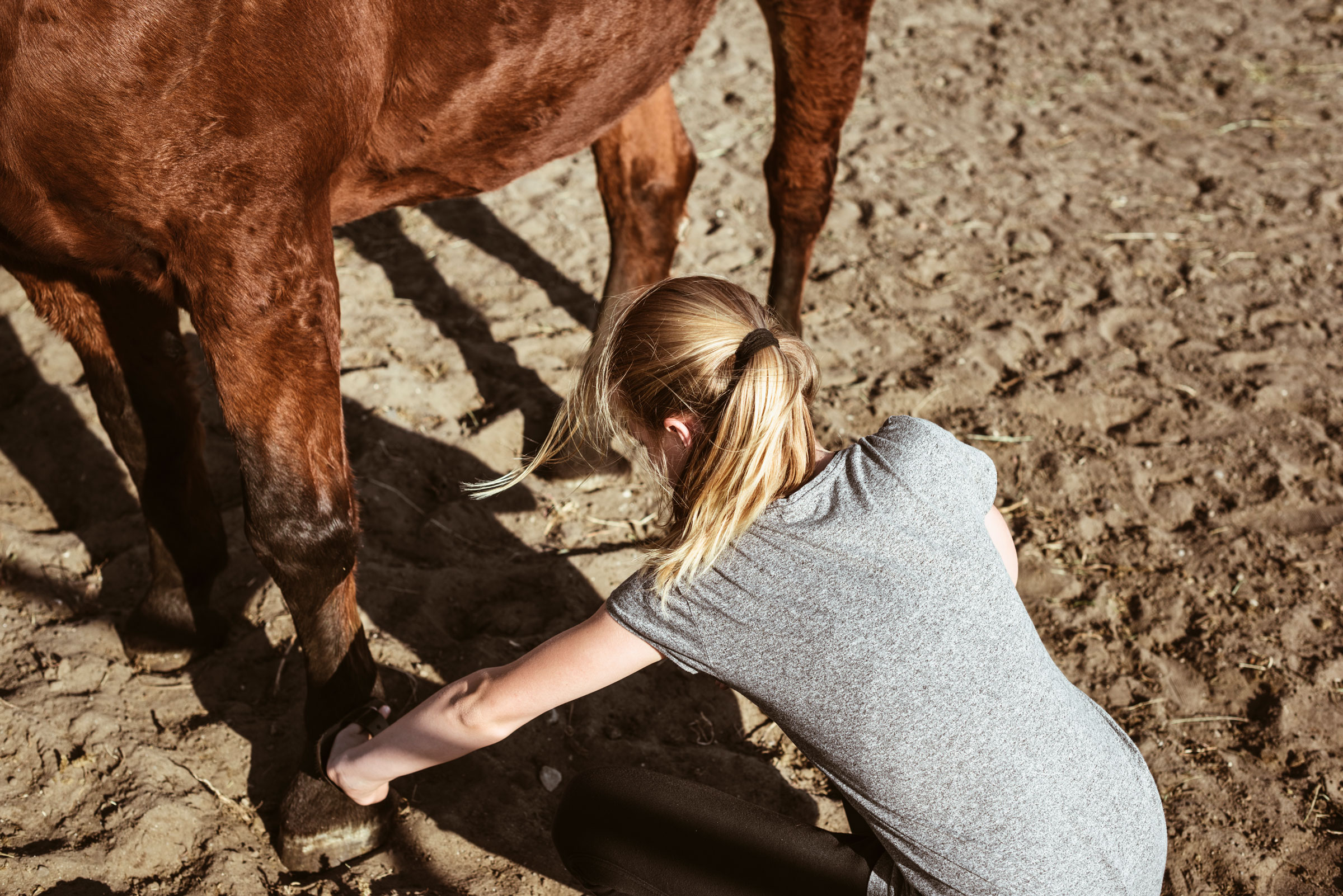
Laminitis causes 18% of all lameness cases, according to the National Equine Health Survey (2018). Approximately 90% of laminitis episodes are a result of endocrinopathies. Early recognition before pathologic changes occur within the hoof could be invaluable to improving equine welfare.
A retrospective study examined results from experimental case control studies that reviewed changes in hoof wall temperature and/or digital pulse pressure during the onset of induced laminitis [Brown, H. Can changes in hoof wall temperature and digital pulse pressure be used to predict laminitis onset? Veterinary Evidence Oct 2019, vol 4, no. 4, https://doi.org/10.18849/ve.v4i4.253].
The first trial (1998) used 22 retired Standardbred horses aged 2-9 years. Temperature sensors were placed in a hole in the dorsal hoof wall of the front feet, just below the hairline. Temperature readings obtained every five minutes were confirmed with an infrared temperature scanner. Environmental temperatures were consistent at 50 degrees Fahrenheit. Laminitis occurred 32-40 hours after induction with carbohydrate overload.
The second case study (2000) involved nine horses age 7-9 years with laminitis induced using black walnut extract given via nasogastric tube to mimic endotoxemia. One forelimb received an implanted temperature probe, which was measured hourly. Environmental temperature was maintained at 68 degrees Fahrenheit. Laminitis developed 8-12 hours after induction.
In the third case study (2001), laminitis was induced in 30 horses with carbohydrate overload in at ambient temperature of 66 degrees Fahrenheit. Thermistors placed on the front dorsal hoof walls were measured every four hours.
A fourth case study (2010) evaluated eight ex-racing Standardbred horses aged 3–7 years with light body condition scores (2.5-4.5/9). Four horses were given a continuous infusion of insulin and glucose to stimulate hyperinsulinemia and euglycemia; the other four served as controls. Ambient temperature was maintained at 61 degrees Fahrenheit. Thermistor probes on the dorsal hoof wall of both forelimbs recorded hoof wall surface temperature. Digital pulses were also palpated.
A 2018 survey was included in the retrospective research. On-line reporting by UK horse owners for 1,070 horses between August and December 2016 showed 97 of the horses were diagnosed by veterinarians and/or recognized by owners as having laminitis. Of those confirmed laminitis cases, 39% had previous bouts of laminitis and 32% were overweight.
While carbohydrate overload or black walnut ingestion is more commonly linked to sepsis-associated laminitis and induces different pathology than is seen with endocrinopathic laminitis, relevant information was obtained about a timeline of events preceding a laminitic attack. The report summarized:
- Increase in bilateral hoof temperature that persists for longer than 12 hours is prodromal to an acute laminitis attack in 18-24 hours.
- Digital pulses increase up to 11 hours prior to onset of a laminitic crisis and are often accompanied by weight shifting.
To improve early detection of laminitis for at-risk individuals, it is recommended to perform twice-daily measures of surface hoof temperature and digital pulses.








